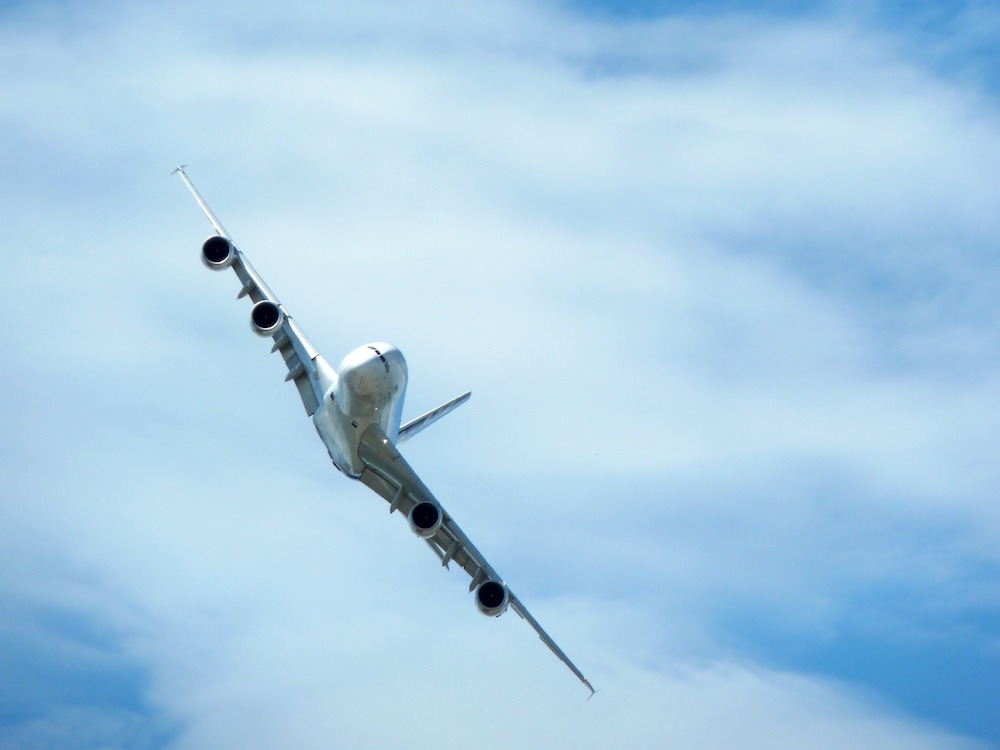Silence, we’re flying!
Reducing noise: a public health issue
When Professor Stéphane Moreau takes a plane, he’s not like the other passengers. On board, he becomes alert to all of the noises around him. It’s a natural reflex for the University of Sherbrooke Research Chair in Aeroacoustics who has chosen to make the noise produced by these flying machines his key research focus.
Anyone who has been on a plane can confirm it: the noise is deafening. Ask the people living in the vicinity of an airport who, every day, hear the big machines take off and land by the hundreds. Those citizens are actually the main concern of Stéphane Moreau.
“The air traffic is not about to stop. In fact, it keeps on increasing. We know that noise pollution has consequences on the health of the residents. Reducing the noise has become a public health concern,” says Moreau. There is a real cacophony of noises hitting us inside an airplane. “All of the components of the engine are making noise at the same time: the fan, the jet, the compressor, the turbine and the combustion chamber,” lists the Department of Mechanical Engineering Professor.
While the engine is the main source of noise, the air moving around the plane is just as loud. This is what is called the flow. During the flight, when the air around the plane reaches a certain speed, the flow becomes turbulent, creating vortices moving all over the place.“The noise is essentially coming from vortices colliding with each other,” explains Moreau.
While the noise caused by planes is a serious issue, the noise coming from cars constitutes a major issue as well. “A lot of work has been done on the powertrain because it was the noisiest. What we are struggling with now are the air conditioning and cooling systems that make an unpleasant noise,” says the researcher.
Do not think that cars are easier to work on. On the contrary!
“The flow is much easier to compute for a plane than for a car. In cars, the air coming into the fan encounters many obstacles on the way and that creates very noisy airflow distortions.”
Moreau and his research team are trying to reduce that noise by looking for a less turbulent airflow that is better controlled and would run along the sides. How? By working with the shape of the blades and of the propulsion and venting systems or by changing the nature of their materials. To do that, the source of the sound must be precisely identified. This is where Compute Canada and Calcul Québec’s supercomputers come into play. Using equations from fluid mechanics, the path of the flow through time is modelled.
But his work doesn’t stop there. Once the precise source of the noise is understood, a solution to reduce it has to be found.
“We suggest some changes and make all the calculations over again to see how it impacts the noise. With the supercomputers, we can get very reliable predictions, eliminating estimations. We can build analytical models which will require no adjustments,” says Moreau happily.
Those computing machines are so sophisticated that it is now possible to establish the sound interaction between two components of an engine and get the total noise.
“We are so advanced that it would be unthinkable to have that work done by humans,” adds the scientist. While the acoustics of airplanes has greatly improved since the very first turbojets, Stéphane Moreau is not about to stop. “Over the next ten years, our challenge will be to cut off another five to ten decibels from the noise produced by airplanes,” says Moreau.
Read more research stories from CALCUL QUÉBEC and COMPUTE CANADA



